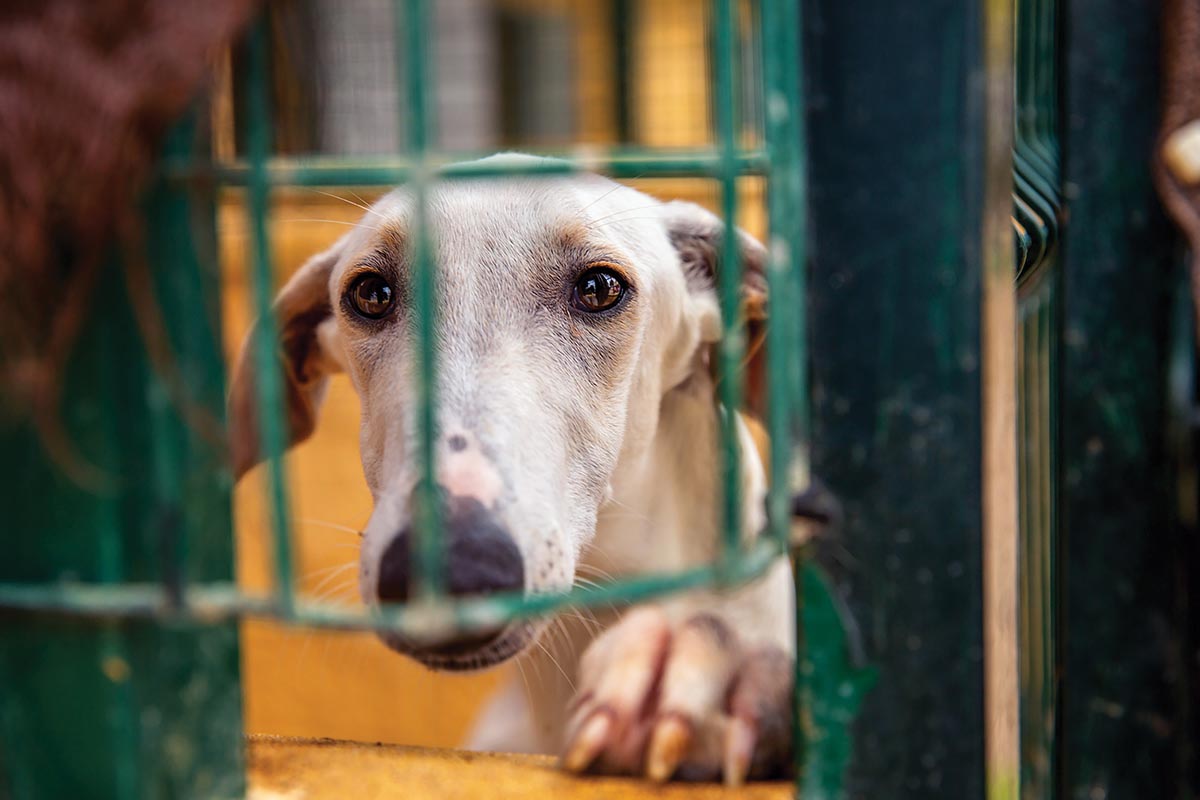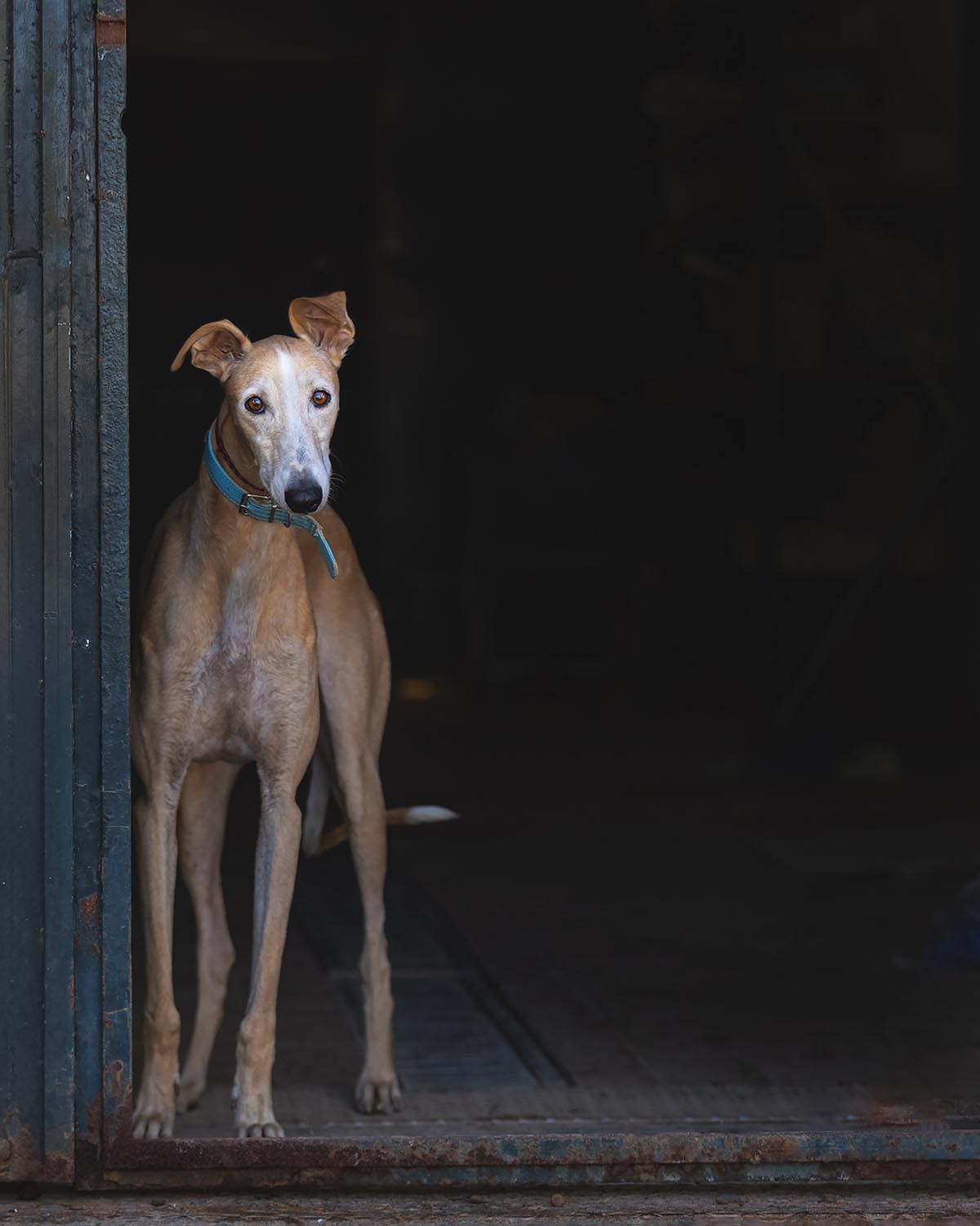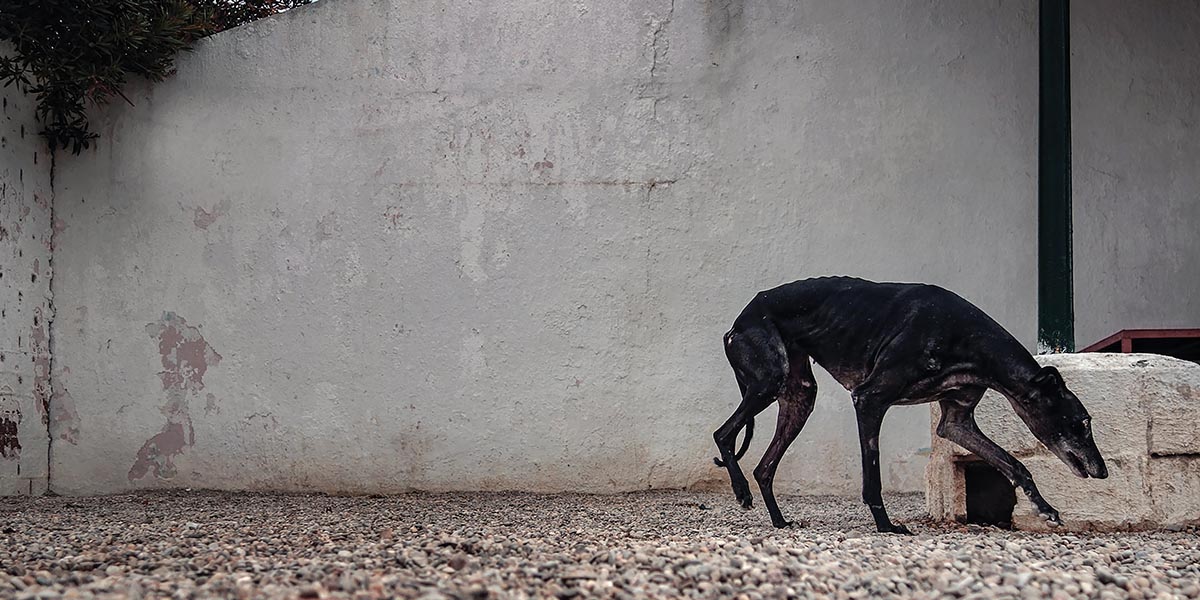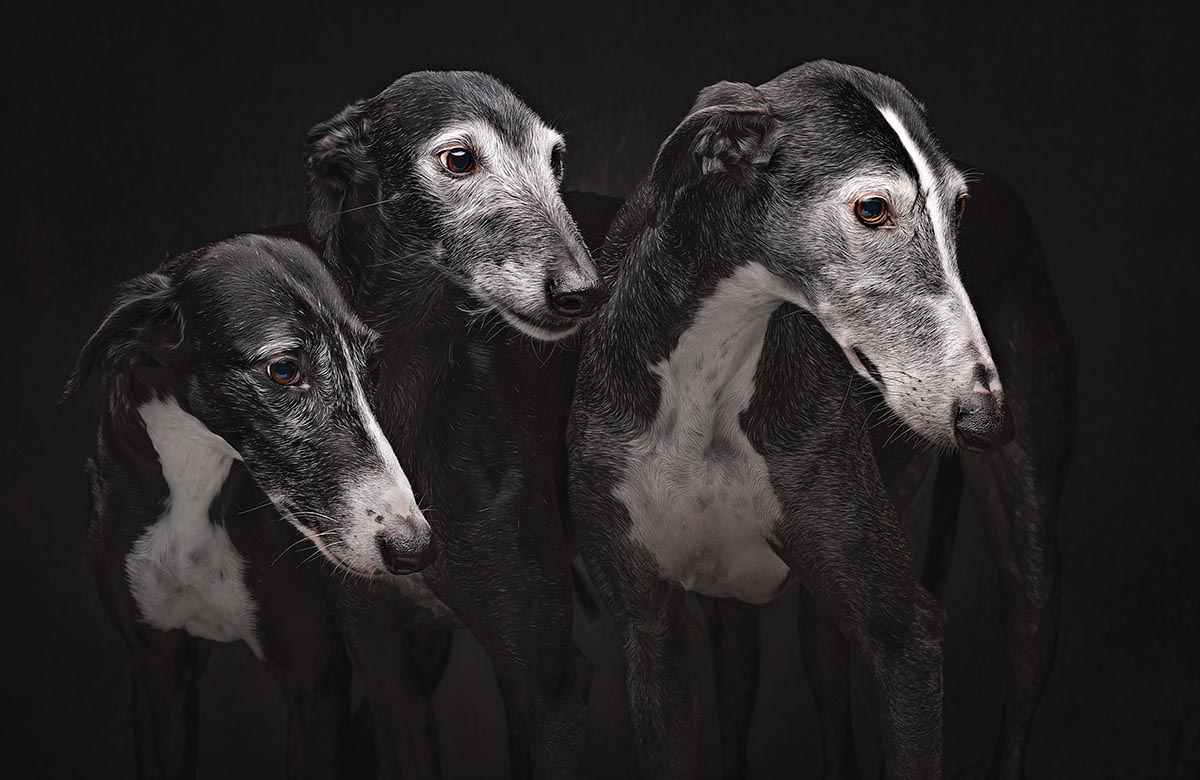
In October 2012, Travis Patenaude, M.Photog., was in a dark place. Suffering from depression, he considered ending his life. “Luckily, I had a moment of clarity and was able to stop myself,” he says. He also attributes to luck that a week later, he and his wife, Amanda, adopted their first Spanish greyhound, Leena. The dog clearly had been traumatized, and when he learned her backstory, he couldn’t help but feel she’d come into his life for a reason. Her previous owner, a hunter, had planned to hang her in a tree because she was no longer useful to him. Patenaude shifted his focus into making her comfortable and gaining her trust, a process that healed both of their broken spirits.
After learning Leena’s story, Patenaude began researching the treatment of Spanish greyhounds, or galgos, in the Spanish hare hunting community. What he learned wasn’t pretty: As many as 100,000 galgos are killed each year at the end of hunting season, which lasts from October to February. Hunters typically keep four females and one male; after the dogs have bred, the male is killed. When the puppies are old enough to begin training, they’re pulled behind an ATV at 30 miles per hour for 10 miles, and any puppy that can’t keep up is dragged. When they begin training in the field, any puppy that sits next to its master or looks back at its master during a hunt is killed. “They want a dog that is full energy, 100% focused on the job, and in a sense will run itself to death,” Patenaude says. It’s survival of the fittest at its worst.

INSPIRED TO ACTION
Disturbed by the mistreatment of galgos in Spain, the Patenaudes, who’d run an adoption group for greyhounds for 12 years, set up a similar organization for Spanish greyhounds, Love Hope Believe Galgo Adoption, partnering with rescue groups in Spain to bring the dogs to the United States to be adopted. When it came time to list the dogs for adoption, a member of Hearts Speak, a nonprofit organization that connects creatives such as photographers with animal welfare organizations, came out to photograph the dogs. “Once I saw her images, I was like, I need to figure out how to take photos because mine really sucked,” he says. He set a goal to improve his photography skills and equipment so he could become a contributing member of Hearts Speak within a year.
In February 2014, Patenaude and Amanda took their first trip to Spain. At a shelter, Patenaude took a photo of a galgo that had just been dropped off; it was visibly frightened and malnourished, covered in scars. “When I showed people that photo, I saw a very noticeable change in them,” he says. “I saw them feel the dog’s fear and, most importantly, show empathy for that dog and want to learn more about it. That is where I discovered the power of photography. That’s where I just jumped headfirst into learning as much as I could about doing photography and trying to tell the story of the hunting dogs’ pain with photography.”

On the plane back from Spain, Patenaude scrolled through the photos he’d made of the dogs and the volunteers who worked with them. He recognized a theme. “I saw that this could make a nice book,” he says, showing the metamorphosis of the dogs as they transformed—thanks to volunteers’ care—from neglected and abandoned hunting dogs to trusting and relaxed adoptable pets. The book, “Galgo Español After the Hunt” was self-published and its sales raised $4,000, which Patenaude donated to BaasGalgo. Later, he published “Faces of Rescue,” portraits of rescued Spanish greyhounds, and is working on a third book featuring adopted galgos along with stories written by the families who have taken them in.

THE LANGUAGE OF DOGS
Patenaude, who makes his living in information technology, devotes most of his photography work toward Spanish greyhound rescue. But his images have also caught the eye of greyhound lovers, who commission him for portraits, which he does in his garage-turned-studio three months out of the year. He also sells fine art prints, which ship worldwide, via his website.
Patenaude offers tips for making dog portraits:
Allow the dog to get relaxed. When a dog comes to his studio for a portrait session, Patenaude allows the animal to explore the room for a full hour before he makes a single photograph. If they seem uncomfortable, he allows them to go into the back yard and then come back in. “The second time it’s a little easier for them.”
Give them treats as the flash goes off. This teaches them that they’ll be rewarded each time they hear the click of the shutter and see a burst of light.
Make a connection with the dog. Allowing a dog time to get used to its surroundings makes it easier to forge a connection with the animal, which leads to natural, relaxed, and soulful expressions.
Don’t light what it looks like; light how it feels. Use light to create emotion and atmosphere, he says. If you want to show the athletic strength of the dog, you might light from the side to create shadows that accentuate the muscles. If you want to elicit sympathy for a battered dog, you might also light from the side to show its emaciated frame. For a more natural portrait, light from the top down to focus on the face.
Arrange the lighting ahead of time. When he’s creating a conceptual portrait, Patenaude uses a stuffed animal to practice the lighting before the session. The setup is in place before the dog arrives, so it’s just a few adjustments and a few clicks of the shutter for the dog.
If the dog keeps jumping off the platform, it’s time to stop. Don’t push a dog to remain in front of the camera if it’s clearly bored or bothered. “I had one session where I got two photos and that was it,” he says. “Luckily, those two photos were perfect.”

THE HUMILITY TO LEARN
In addition to commissioned portraits of dogs, portraits he’s created for his books, and documentary photos of galgo volunteer work, Patenaude creates conceptual portraits, often featuring his own dogs, which have become a way for him to tell their story as well as express his feelings. He’s entered images into PPA’s Merit Image Review, giving him the opportunity to receive feedback from judges, learn from peers, and challenge himself.
He learned two lessons from this experience, he says. First, he changed his mindset to view others’ images as motivation to learn rather than a reason to throw in the towel. It can be intimidating to view seasoned photographers’ work, but “They had to start in the same spot I did,” he says. No one knows how to create perfect photos when they first pick up a camera. They all had to go through the same process of learning and improvement, he would tell himself. Second, don’t be afraid to ask for help. He’s been pleasantly surprised that some of the photographers he most admires have been happy to review his images and offer feedback after he reached out to them.

One of Patenaude’s conceptional images, “Saying Goodbye,” was a finalist in PPA’s 2021 Grand Imaging Awards, which is especially poignant for Patenaude since the image honors Leena, his first galgo rescue, whom he credits with saving his life and leading him to the “amazing gift of photography.”
“We adopted her in 2012 and she passed away in April 2015 from cancer, so she was only with us for three short years,” he says. “But she had such a profound effect on our lives.” Leena is his why. In rescuing her, she rescued him from his depression, and he’ll never stop repaying her for that. “My goal is to tell anyone who is willing to listen about her story and about the hunting dogs of Spain,” he says. And he’s using photography to do it.
Amanda Arnold is a senior editor.



